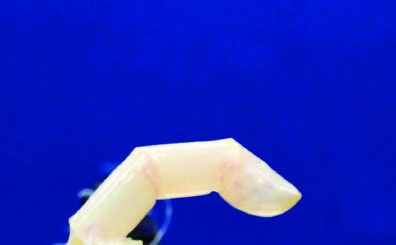How Hummingbirds Fly Through Spaces Too Narrow for Their Wings
Hummingbirds are natural acrobats, twisting their wings in ways that let them fly backward and upside down, unlike any other bird (SN: 1/13/16). A new high-speed video now shows how, using a bit of aerial gymnastics, hummingbirds can also slip through gaps narrower than their wingspan.
Most birds can bend their wings at the wrist, pulling arched wings close to their bodies to navigate their way through dense vegetation like branches. But hummingbird wings aren’t as flexible. Because the wings stick straight out of a hummingbird’s body, getting through tight spaces requires some tricky maneuvering.
Anna’s hummingbirds (Calypte anna) fly sideways to make it through holes too small for their rigid wings, researchers report on November 9 in the Journal of Experimental Biology. To avoid hitting a hole’s sides, the birds also flutter their wings while flying through a tight space rather than using their full range of motion for each wingbeat. After successfully navigating the obstacle a few times, the birds switch it up, flattening their wings against their bodies and shooting through holes like a bullet. “This is a new insight into the amazing capacity of hummingbirds,” says Bret Tobalske, a biomechanist at the University of Montana in Missoula who wasn’t involved with the research. Sideways flight to maneuver through gaps is “pretty remarkable” and highlights how unique hummingbirds are among birds, he says.
The findings could help engineers develop aerial vehicles or robots suitable for navigating tight, complicated spaces. Hummingbirds are among nature’s best fliers and are fantastic at remembering their spatial environment, says Bo Cheng, a mechanical engineer at Penn State not involved in the study. But “the state of the art in drones hasn’t really reached hummingbird-level flight capability yet,” he says. The rapid beat of hummingbird wings—around 40 beats per second for an Anna’s hummingbird—gives the birds precise control over flight, and engineering needs to catch up.
Because hummingbird wings are so rigid, biologist Marc Badger often wondered how the birds dealt with obstacles and tight spaces. While a graduate student at the University of California, Berkeley, he would watch the tiny birds sip nectar from a feeder. Sometimes individuals would chase one another through the branches of a nearby bush yet emerge unscathed. “And that got me thinking, How in the world are they doing this?”
He and his colleagues caught four wild male Anna’s hummingbirds and trained them to fly between two feeders inside an enclosed flight arena. Once the birds were accustomed to the setup, the team introduced barriers with a hole ranging from 6 to 12 centimeters in diameter, equivalent to about half or a full hummingbird wingspan.
To the human eye, hummingbirds flying from feeder to feeder appeared as blurs on computer screens monitoring the enclosure, says Badger, now an engineer at Aescape, a therapeutic robotics company based in New York City. But high-speed cameras placed to the side and below the hole showed that the birds first used sideways flight to shimmy their way through narrow gaps. Then each bird switched to diving through the hole.
“It was a shocking revelation to see the sideways scooch,” says Robert Dudley, a physiologist at UC Berkeley. He’d assumed hummingbirds would just use the ballistic style, flattening wings against their bodies, as many songbirds do. “But to slow it up and then go sideways and not drop in altitude was a novel behavior that had never been seen before.”
It’s unclear whether the hummingbirds learned the navigation techniques in the lab or whether they brought a collection of innate strategies with them, Badger says. But all four birds started with sideways flight and transitioned to the bulletlike technique, which could suggest that the same tactics get used in the wild.
Also unknown is why hummingbirds might use either technique. It’s possible that sideways flight offers flexibility to reverse course around obstacles that might be hiding predators like cats, Badger says. But because the wings continue to flap, feathers can also hit objects and possibly break. “One story that I tell myself,” Badger says, “is that once they get a sense of what’s on the other side and a sense of their surroundings, then they switch over to this ballistic technique to avoid the consequences.”

















Recent Comments